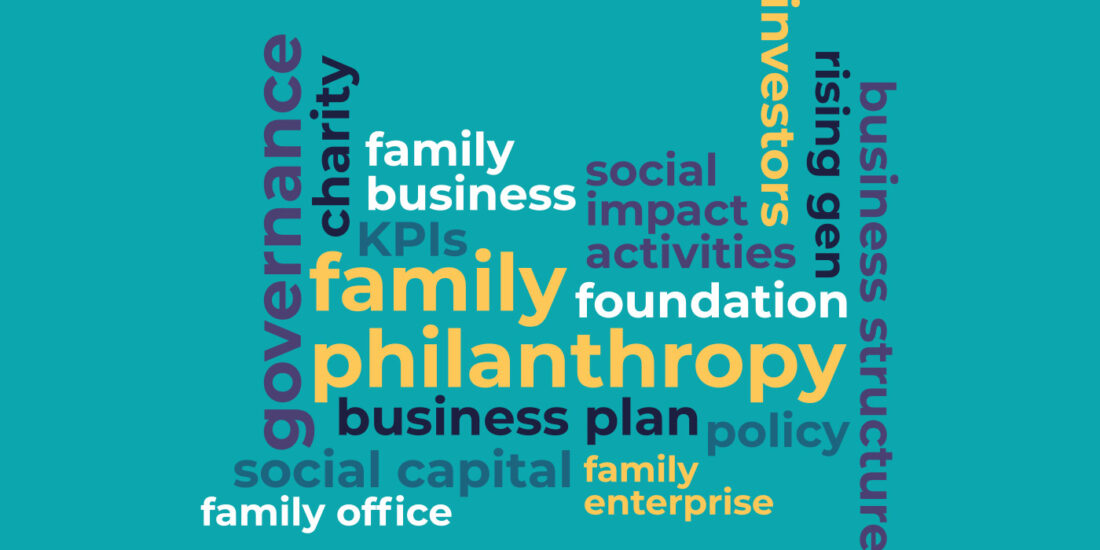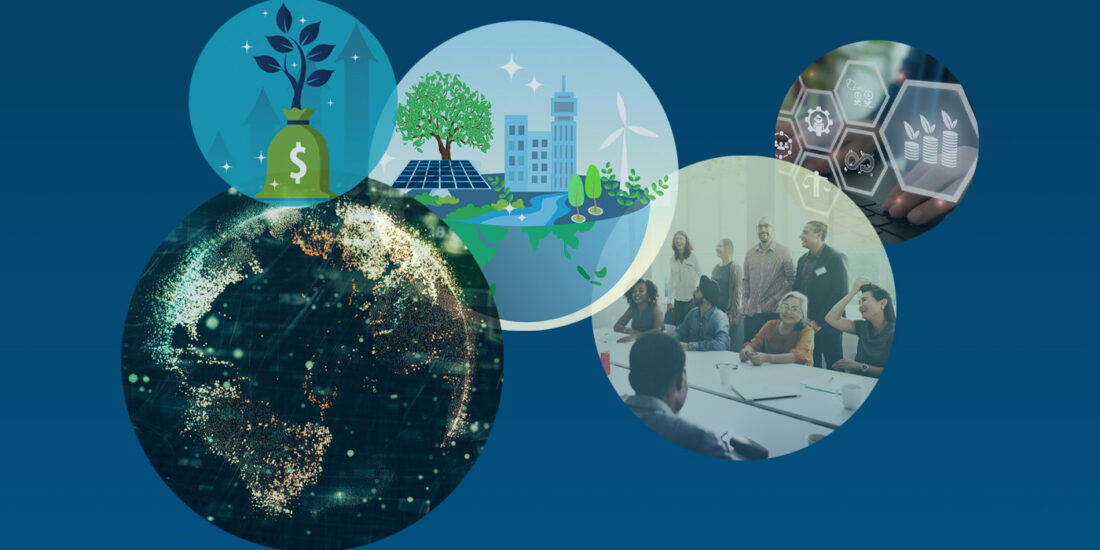Research Applied: FBR Précis for the Practitioner
Continuing our series of précis on articles published in the Family Business Review, this week’s issue features a commentary by Maya Prabhu, FFI GEN faculty member and managing director of the Coutts Institute in London on “Philanthropy in Family Enterprises: A review of the literature.”
Read the précis below and go here for the article and here for a podcast with Isabel Botero, one of the authors.
(Authors: Neus Feliu and Isabel C. Botero)
Research Applied précis prepared by Maya Prabhu, Coutts Institute
In this paper, the authors present a review of literature about family enterprises and their approach to and practice of philanthropy. The reviewed literature includes academic and practitioner-led publications from the US, Asia and Europe in an attempt to provide a comprehensive view of motivations and practices. In doing so, the article helps consolidate our understanding of the field and highlights areas for further exploration.
The paper seeks specifically to answer five questions:
- How is philanthropy defined in the literature?
- What are the diverse motivations for philanthropy in family enterprises?
- How is philanthropy practiced by family enterprises and specifically what factors may influence using philanthropic vehicles such as foundations?
- What outcomes does the practice of philanthropy produce for family enterprises?
- What areas and opportunities exist for future research into this topic?
Defining philanthropy
‘Philanthropy’ is derived from a Greek word that literally means ‘love of humanity.’ The authors find that the terms ‘philanthropy’ and ‘charity’ were initially used interchangeably and focussed on helping those less fortunate. This type of giving was driven almost purely by altruism. This changed with the emergence of the early 20th century philanthropists (e.g. Andrew Carnegie, the Ford and Rockefeller families most notably) who went beyond ‘charity’ which they felt equated to supporting basic needs such as food and clothing to tackling the root causes of issues such as a lack of education or skills and further, the structural nature of societies which prevented all people from thriving. They also began to support a wider array of causes including the environment and the arts. At the same time, they wanted to see the impact of their ‘philanthropy’ on beneficiaries and public approval for themselves.
Based on their review, the authors define ‘philanthropy’ as “the voluntary donation of resources (i.e., time, money, effort, or knowledge) to support causes that are primarily intended to promote the betterment of society with no direct expectation of economic returns.” So in their view, the main aim of ‘philanthropy’ is to ‘serve society’ although the authors acknowledge that there are diverse secondary motivations for individuals, families and businesses.
Diverse motivations
Practitioners, whether established or new to the field, will find that it is in exploring the diverse secondary motivations that they can appreciate the complexity of philanthropy as practiced by family enterprises. These motives can be:
- Family focussed (e.g. articulating and living family values, building family cohesion, providing opportunities for the next generation to work together, creating responsible inheritors, family legacy and social standing)
- Business focussed (e.g. higher sales, engaging employees and other business networks, building political connections and tax relief)
- Dual focussed (both family and business). For instance, where the public’s exposure to the family’s philanthropy can create a positive view of their business and enhance the family’s and the business’s reputation
The authors suggest that based on their findings, family enterprises whose names are above the business’s door are more likely to be interested in the reputation of the family and therefore more likely to engage in philanthropy. However, the authors were unable to source empirical research on a number of the motivations many of which are gleaned from practitioner literature.
In my own practice, and also in what Jim Coutre and I teach in FFI’s GEN 504 class Philanthropy: More than Money, I have found that it is critically important for practitioners (a) to first listen to the diverse motivations and help a family enterprise to agree and prioritise them and (b) to use these motivations as the foundation upon which to build a family’s philanthropy strategy and then review its progress periodically. These motivations combined with the family’s values, interests and concerns enable clients to choose the causes they may wish to focus on to benefit society.
Philanthropy practices in family enterprises
In relation to the use of philanthropic vehicles, such as foundations, the authors found that family enterprises are broadly more informal in their practice of philanthropy and tend to use vehicles when their practice is more mature. Where families used foundations they discovered that they serve different objectives: a) as a family foundation they can be used as a tax efficient vehicle to coalesce the family’s giving; or b) as a corporate foundation they serve the business’s philanthropic objectives and activities; or c) a hybrid linking business and family goals and funded by the company. In some cases foundations can be owners (partial or full) of the business. I would suggest that the latter offers scope for much more inter-disciplinary study to see the impact that this type of ownership has on inter-generational transitions and planning particularly from the point of view of successors.
Amongst other characteristics, the authors’ review of literature reveals that family foundations tend to have smaller boards and more female members. The role of women in family businesses is a much explored topic and practitioners, often anecdotally, report that as women step out into more public roles within a family enterprise (particularly where they have tended not to have roles in the enterprise for cultural reasons) a family or corporate foundation tends to be one of the first roles they take.
Outcomes associated with philanthropy for family enterprises
The authors explore outcomes linked to a family enterprise’s secondary motives and found that philanthropy has a positive impact on family dynamics, provides opportunities to engage and educate family members who are not involved in the business, experiences better business performance and stock valuations, and finds that the family is perceived positively by society. Whilst these positive outcomes are no doubt interesting and enhance our practice, I feel more exploration is also required on why and how philanthropy can make poor family dynamics worse as I have highlighted in my article ‘Philanthropy: The glue but not the panacea!’. Additionally, it would also be useful for future research to study the impact and contribution of their philanthropy on society – their primary motivation – in greater detail.
The authors develop a helpful model (see Figure 1 in the paper) which summarizes the motives and outcomes of engaging in philanthropic activity in family enterprises.
Opportunities for future research
Following this very useful review, the authors have outlined a number of topics that would benefit from further study. They include:
- Further research into the definition of philanthropy particularly how it links with Corporate Social Responsibility and the emergent fields of social entrepreneurship and impact investing. This is particularly interesting in the context of the B Corp movement[1] and the desire for a more inclusive model of capitalism in which family enterprises, driven by the values of the family, could be at the forefront.
- A second area they have identified is that of motivations and how business, family and dual motives combine to influence how family enterprises engage with philanthropy, especially where they have multiple businesses.
- A third area for further empirical work could be to study the factors that lead family enterprises to move from informal practices (round the kitchen table in its simplest form) to more formal vehicles such as foundations and help us get a deeper view into the variety of objectives for using these vehicles and their impact on long-term family cohesion and business continuity.
Finally the authors highlight that the culture and practice of philanthropy is diverse in different contexts and its level of maturity is related in many ways to the political context within which the family and the enterprise are based. This diversity in practice and history in different contexts is clear from our work on the Coutts Million Dollar Donors report which captures the scale and nature of significant philanthropy (not only by family enterprises) of $1m or more in the USA, Russia, Middle East (GCC region), China, Hong Kong, Singapore, South Africa and India.
[1] B Corps are companies wishing to benefit society as well as their stakeholders. They are for-profit companies certified by the nonprofit B Lab to meet rigorous standards of social and environmental performance, accountability, and transparency.
About the contributor
 Maya Prabhu, CFBA, CFWA, ACFWA, is managing director of the Coutts Institute, Coutts & Co. in London and has been involved in developing numerous reports and pieces of thought leadership. She teaches GEN 504: Philanthropy – More than Money. Maya can be reached at [email protected].
Maya Prabhu, CFBA, CFWA, ACFWA, is managing director of the Coutts Institute, Coutts & Co. in London and has been involved in developing numerous reports and pieces of thought leadership. She teaches GEN 504: Philanthropy – More than Money. Maya can be reached at [email protected].




